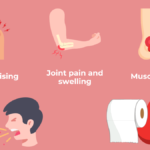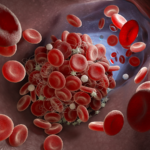Acquired immunodeficiency syndrome (AIDS), caused by the human immunodeficiency virus (HIV), significantly weakens the immune system, leaving individuals vulnerable to opportunistic infections. One such severe complication is toxoplasmosis, a parasitic infection caused by Toxoplasma gondii. This article provides an in-depth exploration of AIDS with toxoplasmosis, including its causes, symptoms, diagnosis, treatment, and prevention strategies.
What is Toxoplasmosis?
Toxoplasmosis is an infection caused by the protozoan parasite Toxoplasma gondii. This parasite is widespread and typically contracted through contaminated food, water, or soil, or by handling infected cat feces. While healthy individuals often experience mild or no symptoms, those with weakened immune systems, such as individuals with AIDS, are at significant risk of severe complications.
Why is Toxoplasmosis a Concern in AIDS Patients?
In individuals with AIDS, toxoplasmosis often manifests as toxoplasmic encephalitis (TE), a life-threatening condition where the parasite infects the brain. The immunodeficiency caused by AIDS impairs the body’s ability to control latent infections, leading to the reactivation of dormant Toxoplasma gondii cysts.
Common Risk Factors for Toxoplasmosis in AIDS
- Low CD4 Count: A CD4 count below 100 cells/mm³ increases susceptibility.
- Latent Infection: Previous exposure to Toxoplasma gondii can lead to reactivation when immunity is compromised.
- Exposure to Contaminants: Contact with contaminated food, water, or soil heightens the risk.
Symptoms of Toxoplasmosis in AIDS Patients
AIDS patients with toxoplasmosis may experience a range of symptoms depending on the infection’s severity and location. Common symptoms include:
- Neurological Symptoms:
- Headaches
- Seizures
- Confusion
- Weakness or partial paralysis
- Systemic Symptoms:
- Fever
- Fatigue
- Swollen lymph nodes
- Visual Impairments:
- Blurred vision due to ocular toxoplasmosis.
These symptoms necessitate prompt medical attention as untreated toxoplasmosis can be fatal.
Diagnosis of AIDS-Related Toxoplasmosis
Diagnosing toxoplasmosis in AIDS patients involves a combination of clinical evaluation, imaging studies, and laboratory tests.
1. Serological Tests
- Detect antibodies against Toxoplasma gondii to confirm past exposure.
2. Neuroimaging
- MRI and CT Scans: Identify brain lesions often associated with toxoplasmic encephalitis.
3. Molecular Tests
- Polymerase chain reaction (PCR) testing can detect Toxoplasma gondii DNA in cerebrospinal fluid or blood.
4. Biopsy
- In rare cases, a brain biopsy may be necessary for a definitive diagnosis.
Treatment of Toxoplasmosis in AIDS Patients
Early and aggressive treatment is essential to manage toxoplasmosis in individuals with AIDS. A combination of antiparasitic drugs and immune-supportive therapies is typically employed.
Antiparasitic Medications
- Pyrimethamine: The cornerstone of treatment, often paired with folinic acid to mitigate bone marrow suppression.
- Sulfadiazine: Works synergistically with pyrimethamine to inhibit parasite growth.
- Clindamycin: An alternative for patients who cannot tolerate sulfadiazine.
Adjunctive Therapies
- Corticosteroids: Used to reduce brain swelling in severe cases of toxoplasmic encephalitis.
- Antiretroviral Therapy (ART): Restores immune function, reducing the likelihood of opportunistic infections.
Prevention of Toxoplasmosis in AIDS Patients
Preventive strategies are critical in managing the risk of toxoplasmosis in AIDS patients. Key measures include:
1. Primary Prophylaxis
- Patients with CD4 counts below 100 cells/mm³ should receive prophylactic treatment, such as trimethoprim-sulfamethoxazole (TMP-SMX).
2. Safe Food and Water Practices
- Avoid undercooked or raw meat.
- Wash fruits and vegetables thoroughly.
- Drink filtered or boiled water.
3. Hygiene and Environmental Controls
- Avoid handling cat litter or wear gloves and wash hands thoroughly afterward.
- Minimize exposure to soil by wearing gloves during gardening.
Long-Term Management and Monitoring
Ongoing management of AIDS-related toxoplasmosis includes maintaining adherence to antiretroviral therapy and conducting regular follow-ups to monitor immune function. Frequent CD4 count assessments and imaging studies may be necessary to track recovery and prevent relapse.
Acquired immunodeficiency syndrome with toxoplasmosis is a serious condition requiring prompt diagnosis and intervention. Through a combination of effective antiretroviral therapy, antiparasitic treatments, and preventive measures, the risks associated with this opportunistic infection can be significantly mitigated. Adopting comprehensive management strategies ensures improved quality of life for individuals living with AIDS.

